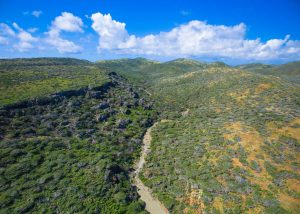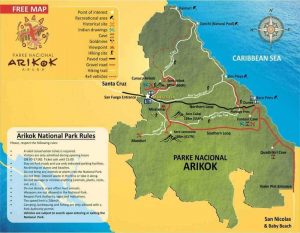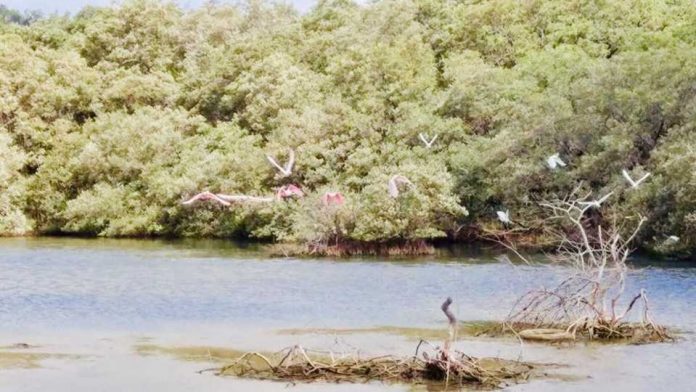The protected area of National Park Arikok was officially established in 2000. Arikok National Park is a 34 square kilometers (7907 acres) of natural area, located at the north-eastern part of Aruba which contains examples of most of the island’s flora and fauna against a backdrop of great geological complexity. We are proud to state that approximately 18% of the total land area of Aruba is assigned as a National Park, to protect and preserve the flora, fauna, geology and historical remains present within Arikok National Park.
The Landscape
There is a great geological variety within the park. The main aspects are the rough hills of the volcanic Aruba lava formation, the mysterious rocks of the batholithic quartz-diorite/tonalite, and the limestone rocks from fossilized coral. The two tallest hills on the island are situated within the park. Jamanota hill 188 meters (617 ft) and Arikok hill 176 meters (577 ft), from which the name of the park is derived.

The line of the permanently wind-and-wave beaten North Coast is broken by several bays (boca’s). Most of them are small yet impressive inlets at the mouth of dry riverbeds. Some of these bays (boca’s) are spectacular sights, adorned with white, sandy beaches and sand dunes, as is the case at Boca Prins and Dos Playa.
Arikok is also home to Conchi, Aruba’s most important natural attraction, also know as The Natural Pool. The journey to the Pool is and adventure by itself and only possible by foot, horse, ATV or 4×4 vehicle.
Cultural and Historical components
There are a number of sites within the park that attest to the history of Aruba. The Caquetío Indians left rock paintings in Cunucu Arikok and Fontein Cave. The bird drawing in the park logo is a copy of one of these historical artistic expressions.
Old plantation (Cunucus) sites tell the story of an active yet challenging agricultural past.
These Cunucus were also residential areas for the few families that worked the land. These families found ways to survive in the difficult conditions, and were able to erect their homes with materials found in the area. Two of these adobe houses have been restored. Park rangers are learning many of the old building techniques in order to preserve this unique Aruban mud-house. At Cunucu Arikok and near Plantation Prins you can find these adobe houses.
Park Management
For the management of the park, a dedicated foundation “Fundacion Parke Nacional Arikok” (FPNA), known today as the Aruba National Park Foundation was established in July 2003. In February 2017, mangrove and wetland RAMSAR site #198 Spanish Lagoon was annexed to Arikok National Park due to its importance as a feeding and breeding area for water birds and as a nursery area for a variety of marine organisms. With this addition, the area under FPNA management increased by 70 hectares while the amount of species of flora and fauna to be conserved to over 250. On December 21st, 2018 (AB 2018 no. 77) Parke Marino Aruba – currently consisting of four marine protected areas (MPAs) – was officially established and subsequently brought under management of FPNA. In 2019 management plans will be established for the new MPAs which include: coral reefs, seagrass beds, mangrove systems, a large diversity of breeding seabirds. Parke Marino Aruba, also contains potential shark nursery areas, endangered sea turtle nesting beaches and marine mammal nursery areas.





















